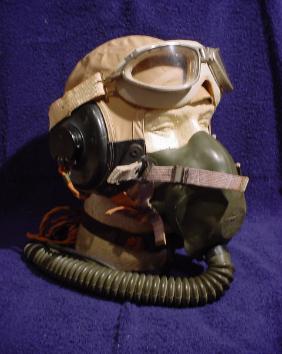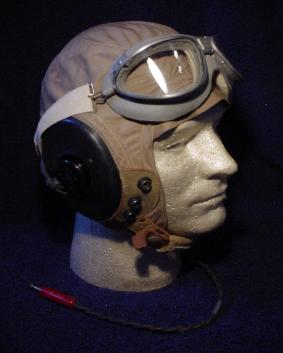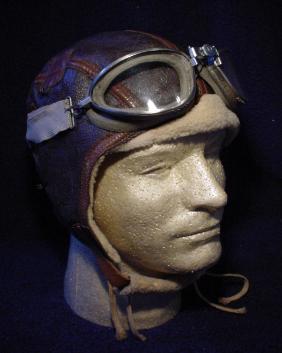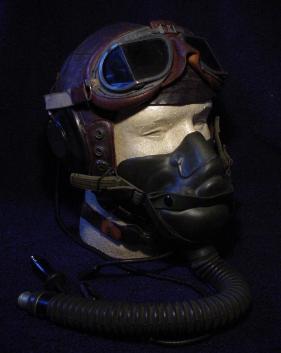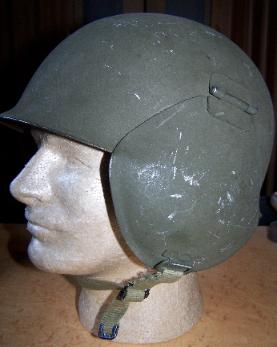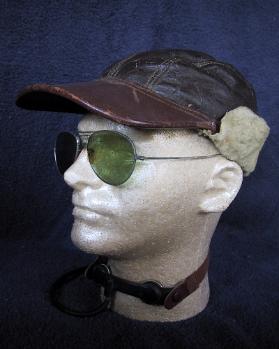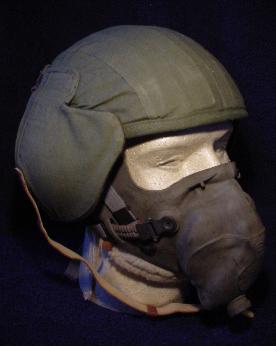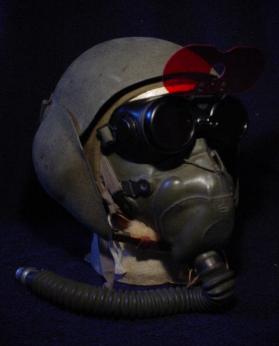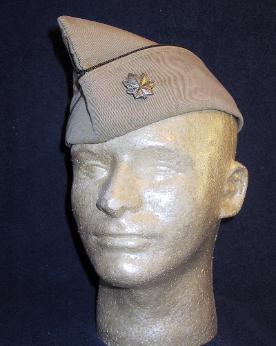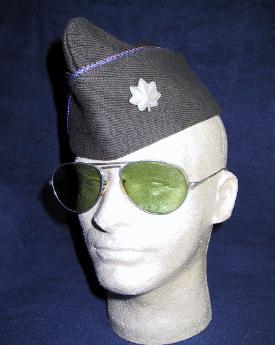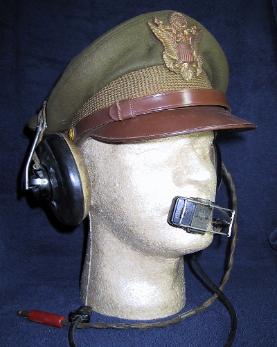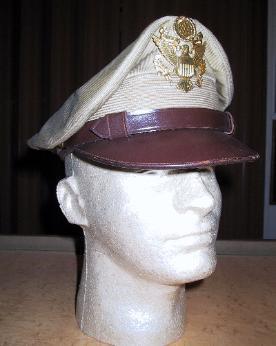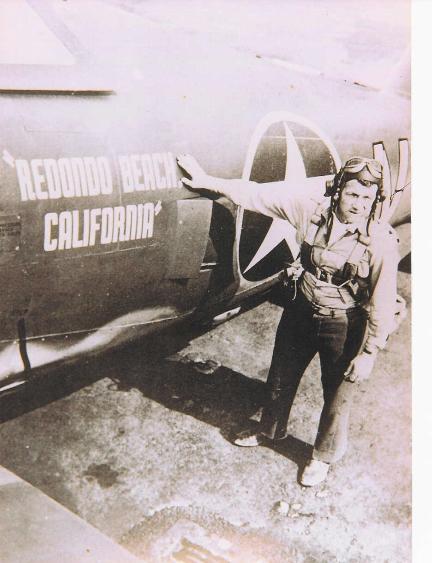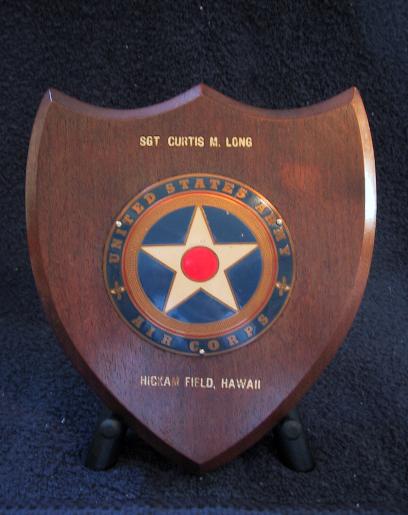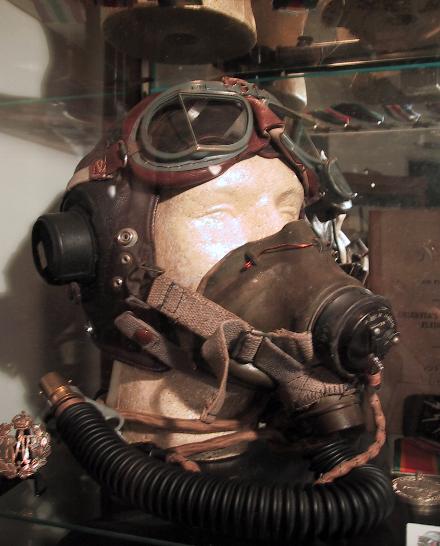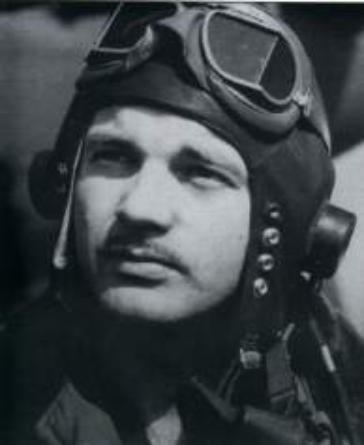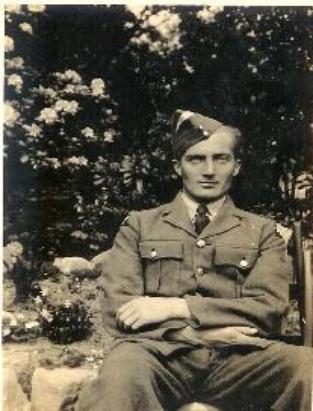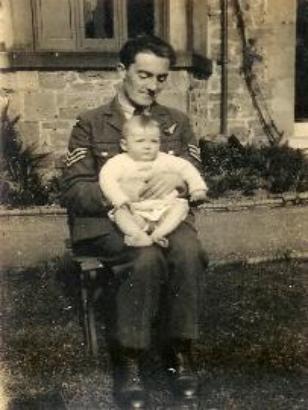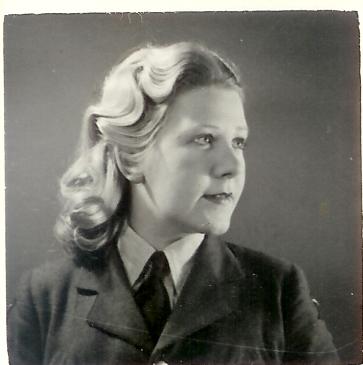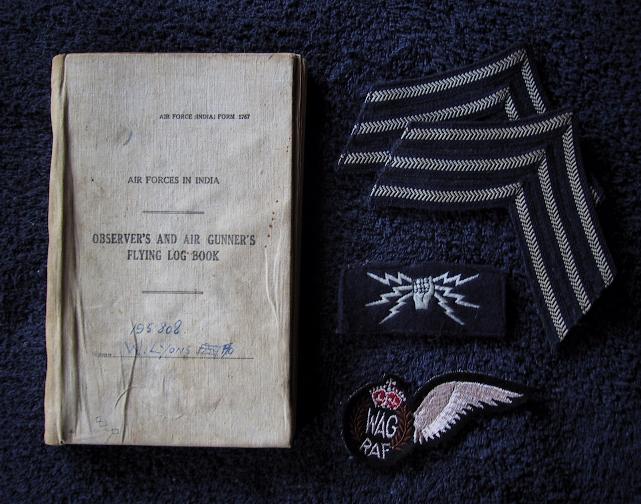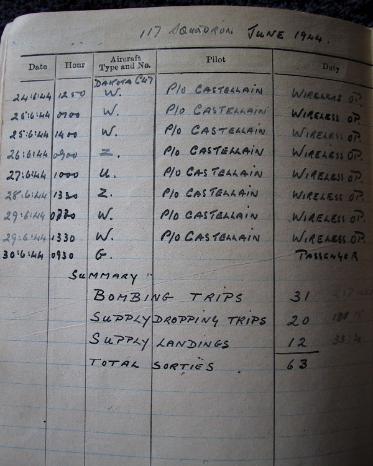| William's log book, contained in my private collection, shows him having a total of 593 daytime flight hours and another 257 nighttime flight hours. He flew in numerous types of aircraft including, Wellington III, Wellington X, Douglas Dakota C-47, Lockheed Lodestar, Avro Anson and the Avro Lancaster. William flew 63 combat sorties during his service time in World War Two. A small notation in the front of Lyons' log book indicates that this is his second log book, further indicating that his first log book was lost in transit while being transferred to the China Burma India theater of war. No. 215 Squadron Motto: "Surgite nox adest" ("Arise, night is at hand"). Badge: A porcupine. The Squadron was formed at Coudekerque in France (early 1900's), the arms of which are described as "de sable un porcepic d' argent, couronne d'or" and a porcupine was therefore considered an appropriate association. Authority: King George VI, November 1937. No 30 Operational Training Unit Formed in No 93 Group on 28 June 1942 at Hixon, it was equipped with Wellingtons to train night bomber crews and by 1944 it was operating Wellington III and Xs. It also used a wide variety of other types for support activities including Defiants, Lysanders, Martinets, Oxfords, Masters, Hurricanes and Tomahawks. As the need for bomber crews diminished, the unit was reduced to three-quarter strength in October 1944, was transferred to No 91 Group and relocated to Gamston in February 1945, where it remained until disbanding on 12 June that year. |
United States Army Air Corps:
| The United States Army Air Corps was a small, under-developed air force on December 7th, 1941. Following the attack on Pearl Harbor and the United States entry into the war, the Army Air Corps grew into the most formidable air force in the world, serving in every theater of operation. This page is dedicated to those pilots and crewmen who served in the Army Air Corps. This page shows Army Air Corps items and original era photographs in my private collection. All of these items are original, WWII era issued items. My collection does not contain any reproduction items. These items are displayed here and preserved in my private collection, with the hope of educating future generations of the terrific sacrifice and service of these brave men. This page displays a very small cross section of WWII US pilot items in my private collection. |
| Above, left to right: An A-11 leather flight helmet displayed with an A-14 oxygen mask and RAF Mk. VIII goggles, An AN-H-15 cloth flight helmet displayed with an A-10 oxygen mask and An-6530 goggles, another AN-H-15 cloth flight helmet displayed with a pair of An-6530 goggles, a B-6 leather flight helmet displayed with a pair of American Optics goggles, another AN-H-15 cloth flight helmet displayed with an A-1 sun visor. |
| Above, left to right: An OD "Crusher Cap" displayed with pilot headset, an early Khaki "Crusher Cap", an EM overseas cap displayed with original, wartime period sun glasses (and incorrect insignia!), a Khaki Officer grade AAC overseas cap, a field made Army Air Corp ground crew cap with hand sewn insignia applied to the cap. |
| Right: US Army Air Corps pilot Paul Conger of the 56th Fighter Group standing next to a P-47D fighter plane, (serial # 42-7880 HV-N) with "Redondo Beach, California" (my hometown) painted on the fuselage. Citizens of Redondo Beach, California donated enough money in war bonds to pay for the production of this aircraft and were recognized with the city name being painted on its side. |
| Two photos directly above: A U.S. Army Air Corps Advanced Flying School ring dated 1941. This ring belonged to Lt. Col. Robert B. Kelly and has his initials "RBK" engraved on the inside portion of the band. |
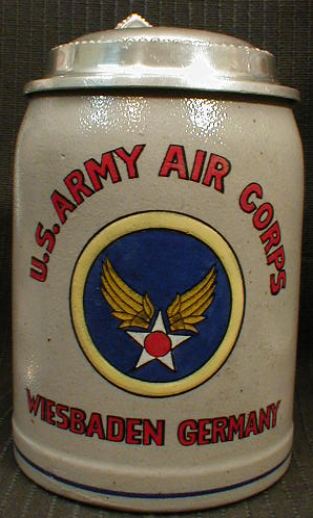
| A view of my RAF Type C flight helmet, complete with MKVIII flight goggles and a Type G oxygen mask. Many American airmen preferred the equipment issued by the RAF and would use the British flight gear throughout the war. Right: Col. Glenn T Eagleston, U.S. fighter pilot/ace, wearing an RAF Type C flight helmet and RAF MKVIII flight goggles. Many thanks to Geoff at oldnautibits.com for working so hard to find me a Type G mask that I couldn't resist! |
William Lyons - WWII Royal Air Force
| My wife's grandfather, William Lyons, was a wireless operator and air gunner who served in a heavy bomber (Lancaster) squadron in the China Burma India theater with the RAF. With the thanks of one of William's sons, Steven Lyons, old photographs of William Lyons during his war time service have been sent along and are proudly posted here. Also pictured is my wife's grandmother, Josephine Lyons, also shown in one photograph during her wartime service in the Womens Auxiliary Air Froce (WAAF). It is with great honor that William and Josephine's photographs appear here as a tribute to their service during the war. |
| Wartime photograph of Josephine Lyons in uniform. |
Wartime photographs of William Lyons in uniform.
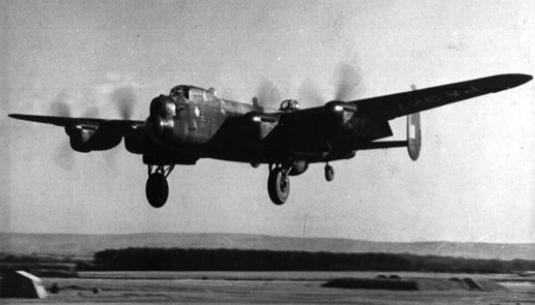
| Original WWII era insignia representing what William Lyons wore on his uniform during the war. Pictured here is his original Observer's and Air Gunner's Flying Log Book, a Wireless Air Gunner Wing, wartime RAF rank insignia and a RAF issued Wireless Operator insignia sleeve patch. All of the items are original WWII Royal Air Force issue. |
| A view of one page from Lyons flying log book, showing logs from late June of 1944. At the time, Lyons was newly assigned to RAF 117th Transport Squadron. This page shows his combat sorties totals having just come from the 215th Bomb Squadron. |
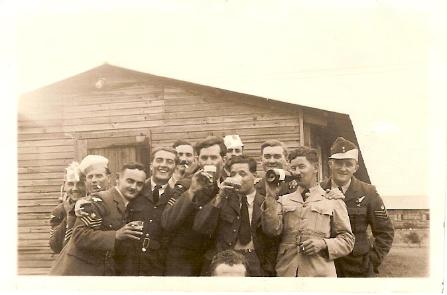
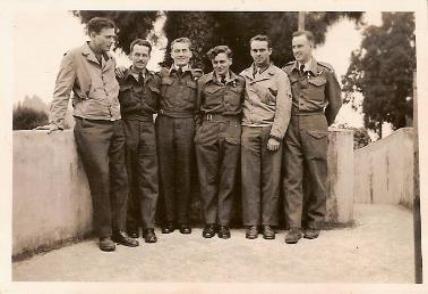
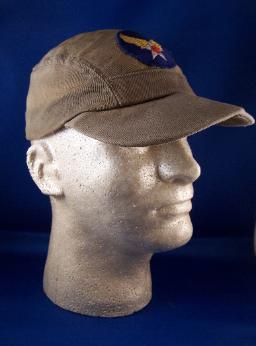
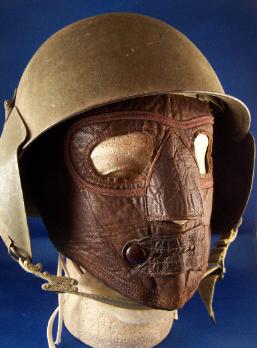
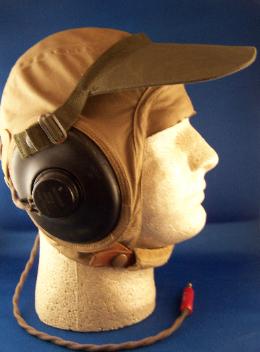
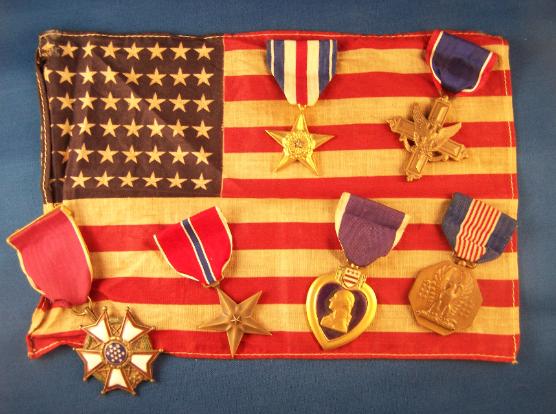
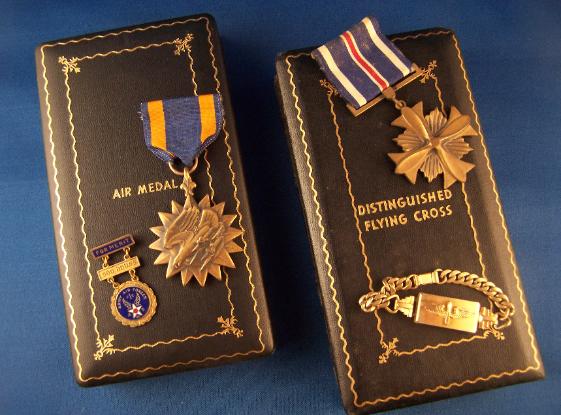
| Above, left to right: An M5 flak helmet displayed with an A-9 oxygen mask (including the rare A-9 mask hose) and a pair of Variable Density Goggles, an M4A2 flak helmet displayed with an A-9 oxygen mask, an M3 flak helmet displayed over an A-9 flight helmet, an M3 flak helmet displayed with a leather cold weather face mask, and a B-2 winter flight cap with period aviator sunglasses and T-30 throat microphone. |
WWII Army Air Corps Headgear:
WWII Rings of the United States Air Corps:
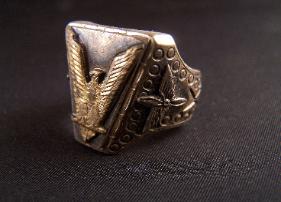
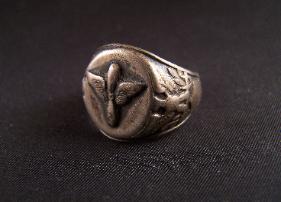


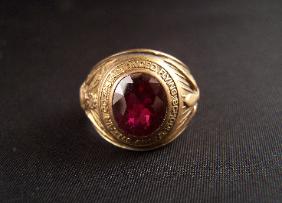
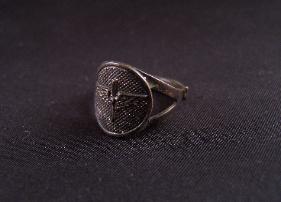
The C.E. Daniel Collection
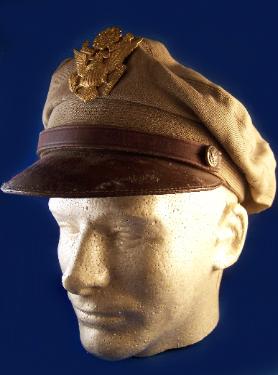
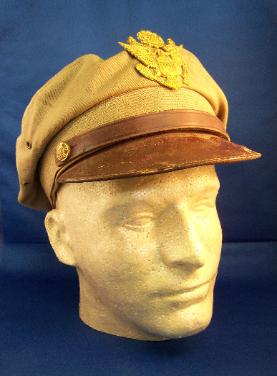
| Above: A salty version of the WWII era US Army visor cap showing much use and wear, with the name tag identifying the original owner as Lt. J.W. Bolyard. |
| webmaster@danielsww2.com |
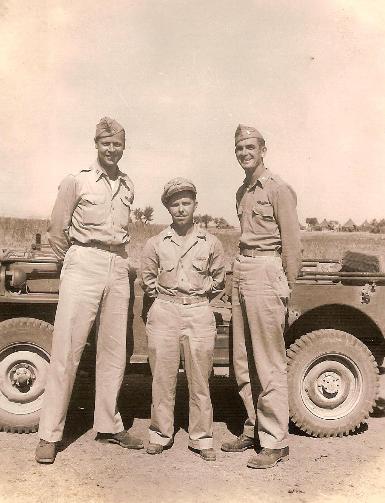
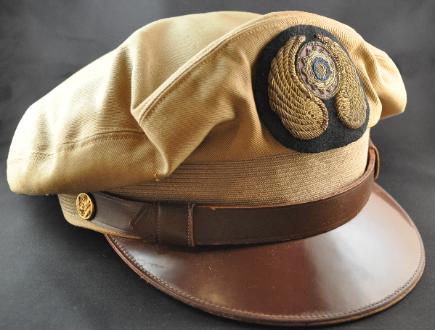
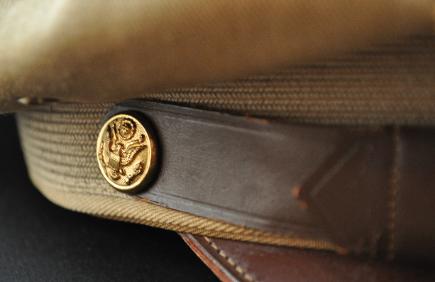
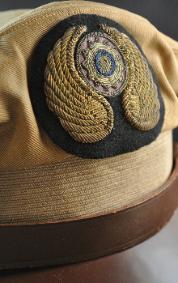
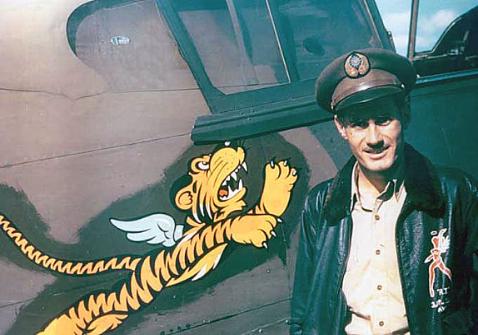
| A WWII Chinese Nationalist Air Force crusher cap with American eagle side buttons and a hand embroidered Chinese Nationalist Air Force emblem. This is a gorgeous period cap as worn by American aviators who flew with the Chinese Nationalist Air Force. To the right is a period photographs showing the same type of cap as worn by a member of the American Volunteer Group "The Flying Tigers." |

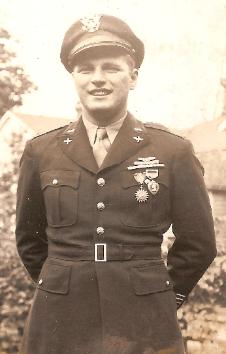
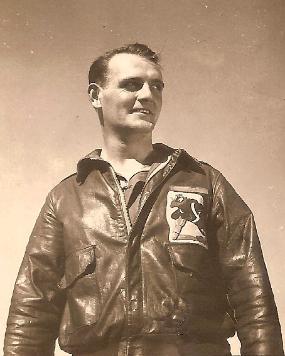
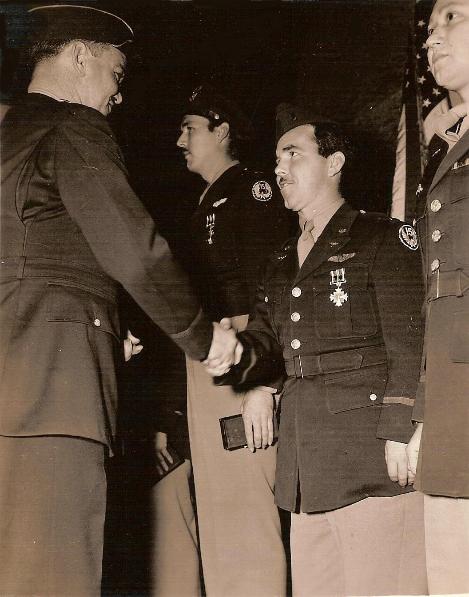
| A small, WWII era 48 star American flag, recovered from the body of an American paratrooper who was killed during the D-Day invasion, shown displayed with a number of WWII era issued medals. Also shown to the right is a Distinguished Flying Cross and Air Medal, displayed with their original issue cases, along with an Army Air Corp bracelet and a civilian AAC medal for merit. |
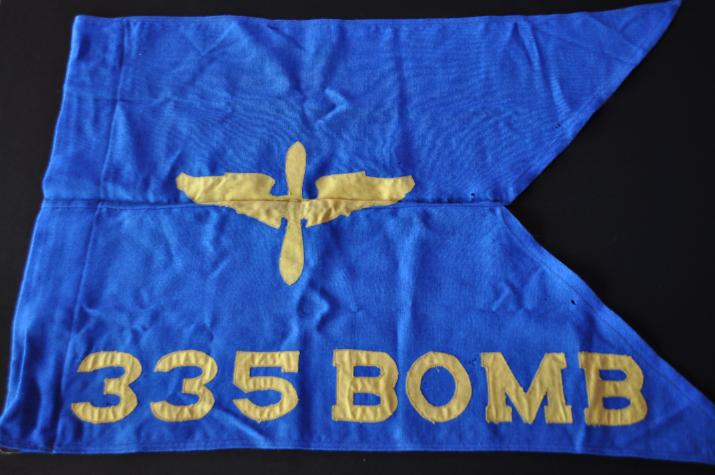
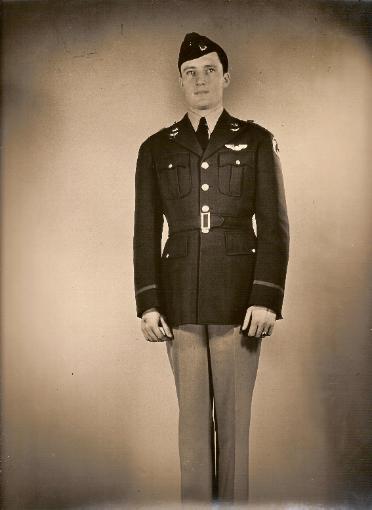
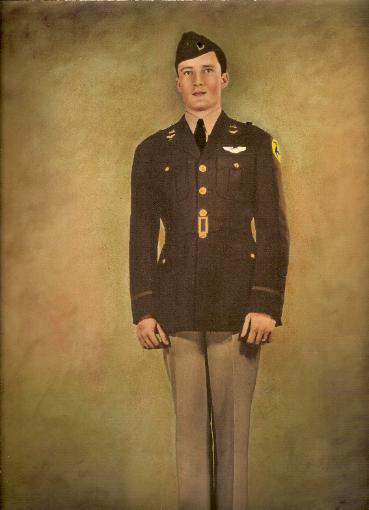
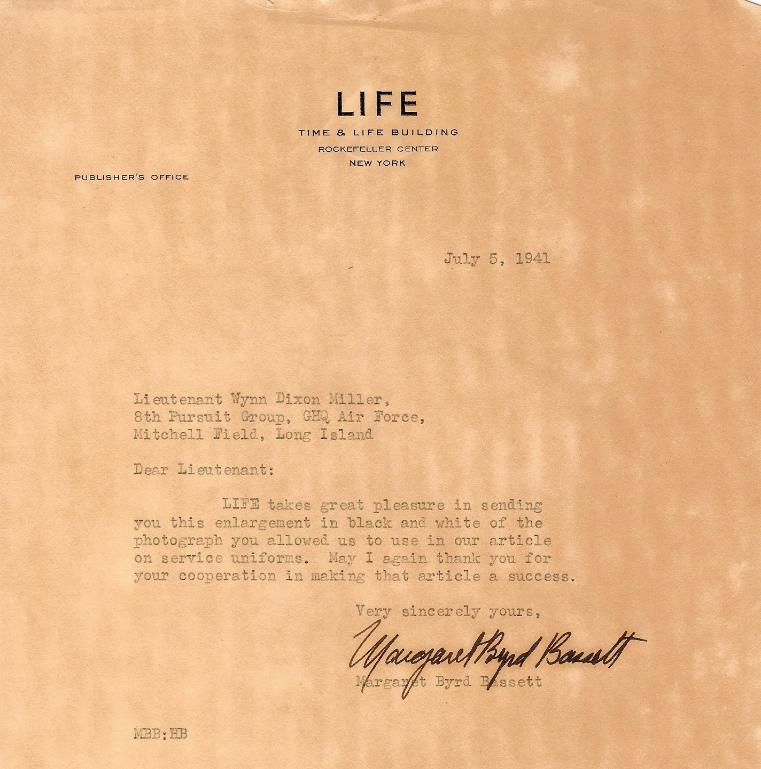
| Above: A letter from Life Magazine to Lt. Wynn Dixon Miller, dated July 5, 1941, thanking him for the use of a color photograph (above) of Lt. Miller in his Air Corps uniform. Life Magazine made a black and white copy of the photograph and used the color version of the photo in an issue of Life Magazine, within an article relating to US military service uniforms. The letter is in its original Life Magazine envelope and it hand signed by Maragret Byrd Bassett of Life Magazine. This same photograph of Miller appears in the May 19, 1941 edition of Life magazine, page 78. |
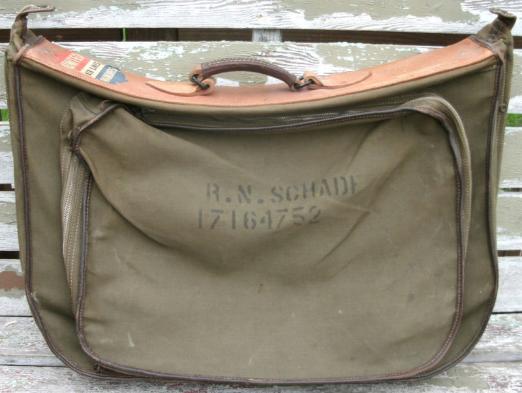
| One small item, a lot of history: This US Air Corps B-4 garment/flight bag was issued to and used by S/Sgt. Richard Neal Schade, service #17164752. Born on December 8, 1923 in Bartlett, Iowa, Schade joined the United States Army Air Corps and trained as a tail gunner, eventually being posted to the 429th Bomb Squadron, 2nd Bomb Group, 15th Air Force. Schade served as the tail gunner in a B-17G, piloted by pilot 1st Lt. Robert P. Trowbridge and co-pilot William D. Struby. Their B-17G, serial number 44-6198 was nicknamed "Dollar 98." Schade was on his 13th mission with the rest of the Trowbridge crew destined for Vienna, Austria when their B-17 was shot down due to German anti-aircraft fire on February 21, 1945. (7 of his 13 missions were to Vienna!) Schade survived the downing and spent the remainder of the war as a prisoner of war in Stalag Luft VII A, located just north of the town of Moosburg in southern Bavaria, Germany. Unconfirmed reports indicate he may also have spent time as a POW in Colditz Castle. Schade survived the war, re-enlisted in what would become the United States Air Force after the war, and later worked as a blacksmith and a welder. Schade passed away on August 16th, 2010 in Apache Junction, Arizona at the age of 86. It is fortunate that this one small item from his past has survived to keep the memory of Mr. Schade's service and sacrifice alive, and I am honored to be able to tell his otherwise unknown story for others to learn about his service. Men like Mr. Schade were the instrument that allowed our great nation to overcome and defeat the Axis. |
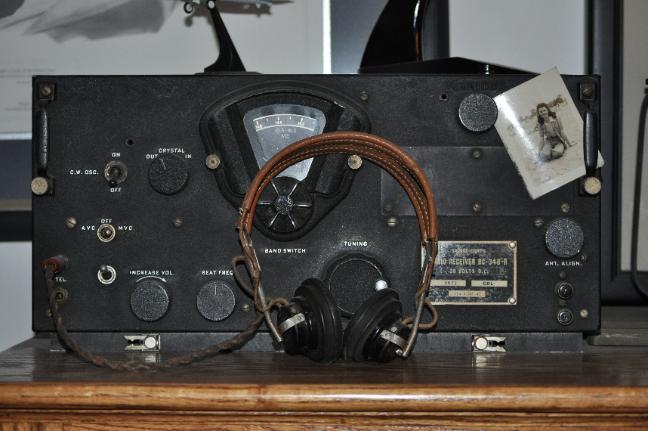
| A WWII era BC-348-R radio receiver, commonly found in the radio rooms of the various models of the B-17 Flying Fortress. The receiver is shown with the correct era headphones and a period photograph of the radio operators girl back home! |
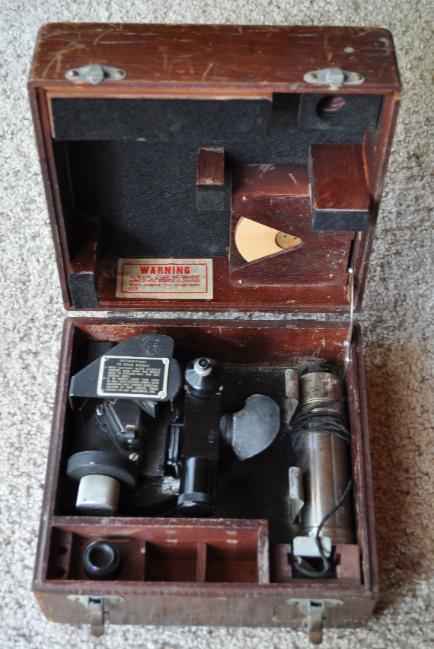
| Left: An A-10 bubble sextant in its original case. This particular sextant was used by Edward Dawson, while assigned as a navigator to the 415th Bomb Squadron, 98th Bomb Group, 15th Air Force. I am still researching Dawson's military career as a navigator with this B-24 squadron. If anyone has additional information concerning Dawson or his crew, I would be interested to hear from you. Above is a photo of the crew Dawson served with. |
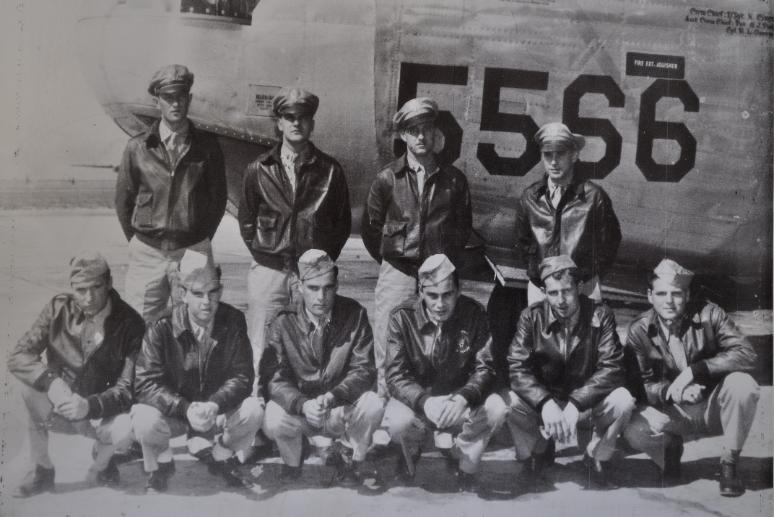
| Right: A German made, U.S. Army Air Corps beer stein. These were produced at the end of the war and immediately after the war by several wartime German stein makers. |
